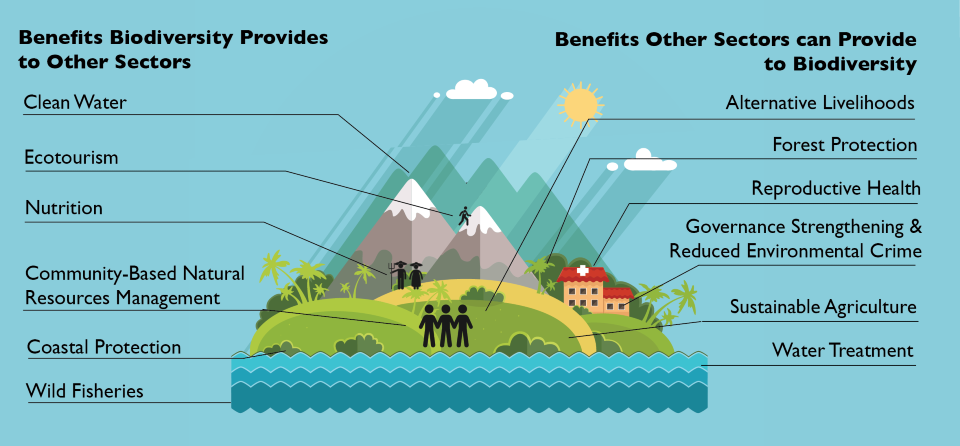Introduction:
Biodiversity, the variety of life on Earth, is essential for ecosystem health, human well-being, and sustainable development. However, rapid urbanization, deforestation, and agricultural expansion threaten biodiversity globally. In the realm of real estate, land preservation emerges as a vital strategy to conserve biodiversity. This article explores the importance of conserving biodiversity through land preservation, the role of real estate professionals, and practical approaches to integrating biodiversity conservation into land use planning.
- The Importance of Biodiversity:
a. Ecosystem Services:
- Biodiversity supports essential ecosystem services such as pollination, water purification, climate regulation, and soil fertility. These services are crucial for human survival and well-being.
b. Resilience and Adaptation:
- Diverse ecosystems are more resilient to environmental changes and disturbances. Biodiversity enhances the ability of ecosystems to adapt to climate change, natural disasters, and other stressors.
c. Economic Benefits:
- Biodiversity contributes to economies through agriculture, forestry, fisheries, and tourism. Healthy ecosystems provide resources and opportunities that drive economic growth and sustainability.
d. Cultural and Aesthetic Value:
- Biodiversity holds cultural, spiritual, and aesthetic significance for many communities. It enriches human experiences and fosters a sense of connection to nature.
- The Role of Land Preservation in Biodiversity Conservation:
a. Protecting Habitats:
- Land preservation efforts focus on protecting natural habitats from destruction and fragmentation. Preserved lands serve as refuges for species, allowing them to thrive and maintain genetic diversity.
b. Mitigating Urban Sprawl:
- Preserving land in and around urban areas helps mitigate urban sprawl, reducing habitat loss and environmental degradation. It promotes sustainable urban development and maintains ecological balance.
c. Creating Wildlife Corridors:
- Land preservation can establish wildlife corridors, connecting fragmented habitats and enabling species movement and migration. These corridors are vital for maintaining healthy populations and genetic diversity.
d. Enhancing Ecosystem Connectivity:
- Preserved lands contribute to a connected network of ecosystems, enhancing overall landscape connectivity. This connectivity supports species interactions, nutrient cycling, and ecosystem resilience.
- The Role of Real Estate Professionals:
a. Sustainable Development:
- Real estate professionals can advocate for and implement sustainable development practices that minimize environmental impact and promote biodiversity conservation. This includes incorporating green spaces, native landscaping, and sustainable building designs.
b. Collaboration with Conservation Organizations:
- Partnering with conservation organizations can help real estate developers identify critical habitats and implement preservation strategies. Collaboration ensures that development projects align with biodiversity conservation goals.
c. Educating Clients and Communities:
- Real estate professionals have a role in educating clients and communities about the importance of biodiversity and land preservation. Raising awareness can foster support for conservation initiatives and sustainable land use practices.
d. Policy Advocacy:
- Engaging in policy advocacy for land preservation and biodiversity-friendly regulations can influence broader land use planning and zoning decisions. Real estate professionals can support policies that balance development with environmental conservation.
- Practical Approaches to Land Preservation:
a. Conservation Easements:
- Conservation easements are legal agreements that restrict land use to protect its conservation values. Landowners retain ownership while committing to preserve the land’s natural state, ensuring long-term biodiversity conservation.
b. Land Trusts:
- Land trusts are non-profit organizations that acquire and manage land for conservation purposes. They play a crucial role in preserving habitats, creating wildlife corridors, and maintaining ecosystem services.
c. Protected Areas:
- Establishing protected areas, such as national parks, wildlife reserves, and nature sanctuaries, safeguards critical habitats and species. These areas provide secure environments for biodiversity to flourish.
d. Restoration Projects:
- Restoration projects aim to rehabilitate degraded lands and restore natural habitats. Reforestation, wetland restoration, and native species planting are examples of initiatives that enhance biodiversity and ecosystem health.
- Conclusion:
Conserving biodiversity through land preservation is a critical strategy for ensuring the health and sustainability of our planet. Real estate professionals have a unique opportunity to integrate biodiversity conservation into land use planning and development practices. By promoting sustainable development, collaborating with conservation organizations, educating communities, and advocating for supportive policies, the real estate sector can play a pivotal role in preserving biodiversity. As we strive to balance development with environmental stewardship, land preservation remains a cornerstone of efforts to protect our natural heritage and secure a vibrant, resilient future for all life on Earth.

